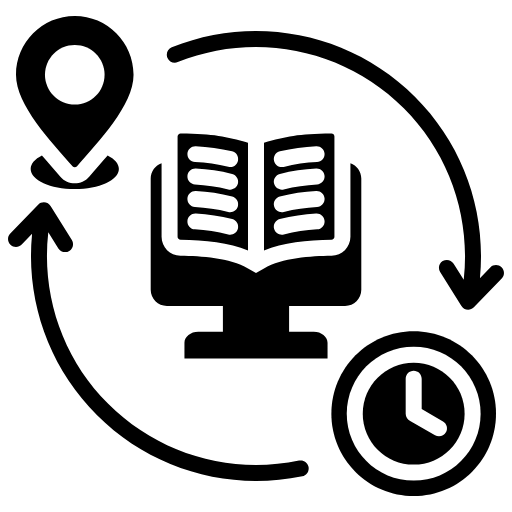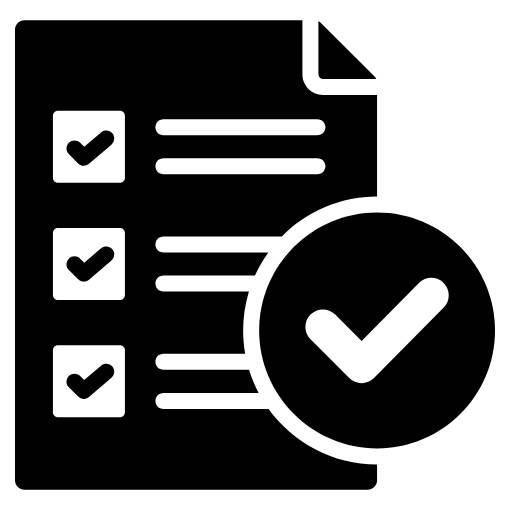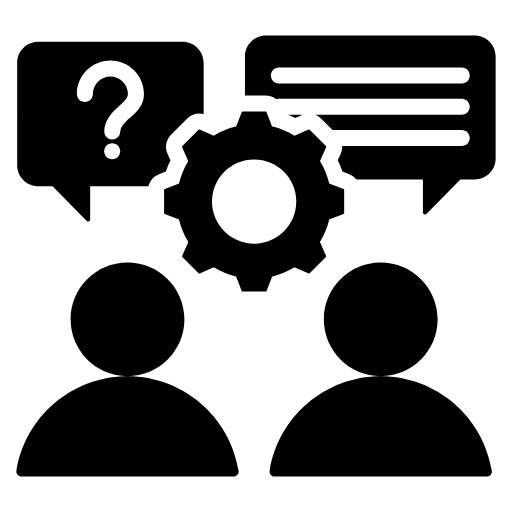Full Stack Developement
Get Full Stack Development Course - Go From Zero to Hired in Just 90 Days
Full Stack Development

Learning Objectives
- Understand fundamental concepts of web development, including browser internals and the evolution of HTTP.
- Gain proficiency in HTML, CSS, and JavaScript, including ES6 features and advanced JavaScript concepts.
- Learn about DOM manipulation, event handling, and asynchronous JavaScript (callbacks, promises, async/await).
- Understand the basics of networking, including IP, MAC addresses, ports, and the request-response cycle.
- Develop skills in using browser tools for debugging and inspection, and differentiate between browser JavaScript and Node.js.
- Gain foundational knowledge of React, including components, props, state, hooks, and routing.
- Learn about state management with Redux and the React Context API.
- Understand database concepts, including MySQL and MongoDB, and learn to implement CRUD operations.
- Develop proficiency in Node.js and Express.js for backend development, including deployment and authentication techniques.
Course Duration
Total
Duration
12 Weeks (3 Months)
3 Weeks Placement Readiness
Weekly
Commitment
10-12 Hours
Pre-Requisites
Basic Computer Literacy
Familiarity with operating systems, file management, and basic software installation.
Mathematics Basics
Understanding of high school-level mathematics.
Basic Programming Knowledge (Preferred)
Familiarity with any programming language (preferable but not mandatory).
Course Outline
- Week 1
- Week 2
- Week 3
- Week 4
- Week 5
- Week 6
- Week 7
- Week 8
- Week 9
- Week 10
- Week 11
- Week 12
Introduction to Web and JavaScript Basics
Day 1: Introduction to Web and Browsers
- Introduction to Browser & Web
- Browser Wars
- DOM tree, CSSOM tree
- Browser internals: HTML parser, CSS parser, JavaScript V8 engine
Day 2: Networking and HTTP Basics
- Internals: IP, MAC address, Ports & Evolution of HTTP
- HTTP Methods
- How the Server looks at the URL
- Request & Response cycle
Day 3: HTML Browser Tools and JavaScript Basics
- HTML Browser view: Debugger, Inspect
- Browser JS vs Node.js
- Data types
Day 4: JavaScript Data Handling
- Copy by value and Copy by reference
- Window & document object
Day 5: JavaScript Arrays and Iteration
- Introduction to Arrays
- Array and JSON iteration
JavaScript Arrays, Objects, and Functions
Day 6: XMLHttpRequest and Hoisting
- XMLHttpRequest
- Hoisting & scope
Day 7: JavaScript Functions
- Introduction to functions
- Function & return keyword
- Types of functions
Day 8: ES6 Basics – Variables and Scoping
- var vs let vs const
- Block scoping
- Spread & rest operators
Day 9: ES6 Advanced – Destructuring and Shorthand
- Array & object destructure
- Object property shorthand
- Template literals
- Arrow functions
Day 10: JavaScript OOP – Prototypes and Classes
- Understanding the basics of prototype
- What are classes in JS?
- Constructor
- Need for setters/getters
- Use of this keyword in classes
JavaScript OOP and Advanced Concepts
Day 11: JavaScript Array Methods
- Map, Reduce, Filter
- Other array methods
Day 12: Introduction to HTML
- What is HTML & Why use it?
- Basic Tags
- HTML vs HTML5
- div vs section vs article
- div vs span
- Inline vs block elements
Day 13: HTML Forms
- HTML Forms
- Input elements and attributes
- Form submit
Day 14: Introduction to CSS
- What is CSS?
- Ways to use CSS
- Property & value
- Class vs ID
- Use of !important
Day 15: CSS Display and Pseudo-Classes
- Display property: inline, block
- Intro to pseudo-classes (link, visited, hover, active)
Advanced HTML & CSS
Day 16: CSS Box Model and Flexbox
- Box model: padding, margin, border
- Grid
- Flex: display, direction, wrap, flex-flow, justify-content, align-content
Day 17: CSS Positioning and Gradients
- Position property: fixed, static, relative, absolute, sticky
- Parent inherit
- Gradient
Day 18: CSS Overflow and Media Queries
- Overflow: hidden, scroll, auto, visible
- Dropbox
- Measurements
- Fonts
- Icons
- Media query
Day 19: Responsive Web Design and Bootstrap Setup
- What is RWD?
- What is the mobile-first approach?
- Bootstrap setup
Day 20: Bootstrap Layout and Grid System
- Bootstrap layout
- Container, container-fluid & container with breakpoints
- Grid in Bootstrap
- Column prefix & its use
- Maximum columns for a row
- Nested columns and column ordering
DOM Manipulation and JavaScript Async Programming
Day 21: DOM Basics
- What is DOM?
- createElement, setAttribute, getElementById, querySelector vs querySelectorAll
- innerHTML vs innerText
- appendChild vs append
Day 22: Window and Event Handling
- Window – Common Util functions
- setTimeout vs setInterval
- Prompt, Alert, Confirm
Day 23: JavaScript Callbacks
- Working with events
- Recap of DOM topics
- Callback
- What’s the callback? – call stack, web API, event loop, queue
Day 24: JavaScript Promises
- Use & purpose of the callback
- Pain of callback
- Promise: What is a promise?
- Promise States
- Promise chain
- promise.all()
Day 25: Promises and Async/Await
- Use of fetch() & then()
- Promise chaining
- Async/Await with error handling
JavaScript Promises and Fetch API
Day 26: Implementing CRUD with Fetch API
- Promise fetch – request info & request init
- Implementing CRUD with HTML, CSS, JavaScript
- Recap of callback, Promise Topics
React Introduction and Basic Concepts
Day 27: React Basics and JSX
- Why React
- Setup React project
- Understanding JSX
- Components (simple HTML layout to reusable React components)
Day 28: React Components
- Understanding the components
- Passing data through props
- Deploying React to Netlify
Day 29: React Lists and Conditional Rendering
- Working with array lists
- Usage of keys
- Conditional rendering
- Handling Events
- Props vs State
React Components and Hooks
Day 30: Advanced React Components
- Components – In-depth
- Component life cycle
Day 31: React State and Hooks
- Stateful and stateless components
- Reusable components
- Passing dynamic data to component
- Introduction to Hook
Day 32: React Hooks – useState and useEffect
- What is the hook?
- Lifecycle of Hook
- useState, useEffect
- Props drilling
- Passing data from child to parent component
Day 33: React Router
- React-router-dom
- BrowserRouter, Switch, Link, Route, URL params
Day 34: React Hands-on Practice
- Recap With Previous Day Topics
- Session-based Hands-on practice Task with any Admin Dashboard
React Context API and Redux
Day 35: React Context API
- Context-API
- What is context, provide, createContext
- Avoid props drilling
- Session task – profile name changes
Day 36: React Advanced Hooks
- useRef, useReducer
- Front end game demonstration – hangman / tictactoe / tile match
Day 37: React API Integration
- Playing around with API
- fetch() or Axios
- Implementing simple CRUD
Day 38: React Final Project
- Completed recap by implementing any Front end game/CRUD to understand the importance of hooks
Day 39: Introduction to Redux
- Intro to Redux – to understand the state management with react application
Database Introduction and MySQL
Day 40: Introduction to Databases
- Introduction to database
- What is MySQL?
- Intro to MySQL engines
- Basic queries – create db, table
Day 41: MySQL Queries
- Insert, update, alter
- Select – where clause, distinct, group by, order by, offset, limit
Day 42: Advanced MySQL
- Normalization
- Select queries
- Joins
Day 43: MongoDB Introduction
- DB model design
- Intro to MongoDB & installation of MongoDB
Day 44: MongoDB Basics
- Why MongoDB?
- What is a document?
- What is a collection?
MongoDB and Node.js Introduction
Day 45: MongoDB vs MySQL
- MongoDB vs MySQL
- Creation of database, collections, documents
- find – query & projection
- Use of operators in find() query
Day 46: MongoDB Aggregation and Cursor Methods
- Basic cursor methods – map, toArray, pretty, forEach, limit, count, sort
- Aggregation
- Server-side vs Client-side rendering
Day 47: Introduction to Node.js
- What is Node.js?
- NPM packages
- In-built, third-party, and custom packages
Day 48: Node.js and Express.js Basics
- What is Express?
- API methods – GET, POST, PUT, DELETE
- Request & response objects
- URL & query parameters
Day 49: Node.js and MongoDB Connectivity
- Connection to MongoDB (local & atlas)
- Simultaneous frontend + backend connectivity
Node.js Deployment and Authentication
Day 50: Node.js Deployment
- dotenv
- Deployment
- Simultaneous frontend + backend connectivity
Day 51: Node.js Authentication
- Authentication
- bcrypt
- Simultaneous frontend + backend connectivity
Day 52: Node.js JWT and Middleware
- JWT
- Custom middleware
- Authorization
- Simultaneous frontend + backend connectivity
Final Project and Review
Day 53: Final Project Implementation
- Final project implementation
- Hands-on practice with CRUD operations and authentication
Day 54: Project Review
- Project review
- Debugging and optimization
Day 55: Course Recap
- Recap of all topics
- Final Q&A session
Day 56: Final Assessments and Presentations
- Final assessments and project presentations
Day 57: Course Wrap-up
- Course wrap-up
- Feedback and future learning paths
Course Outline Chart
Stop Watching Tutorials, Start Building, Learn Full Stack Web Development the Right Way
Unlock Your Potential with Industry Certifications
Showcase Your Skills Loud & Clear with our Full Stack Developer Course with Certification

From Classroom to Career – Full Stack Developer Course with Placement Guarantee Included

Resume Building
We upgrade and polish resumes to showcase potential and attract top recruiters

Portfolio Creation
Guide you to build real projects that prove your skills obtain from our full stack development course

LinkedIn Optimization
We optimize LinkedIn profiles to boost visibility and attract serious tech employers

Career Coaching
We offer 1-on-1 coaching to map goals and accelerate career progress

Mock Interviews
Conduct simulates real interviews so students build confidence and handle pressure perfectly

Job Matching
We match your strengths with roles to help you become a full stack developer

Interview Referrals
Connect you to trusted recruiters hiring full stack developers with urgency

Placement Support
We walk with you until you land the role you truly deserve
Why Learn Anywhere Else? Get Results with the Best Full Stack Developer Course
Build Real Projects
Don’t just watch tutorials—learn full stack web development by actually building real-world apps. From frontend design to backend logic, our course ensures you graduate with a strong portfolio and job-ready confidence.

Expert-Led Training
Don’t just watch tutorials—learn full stack web development by actually building real-world apps. From frontend design to backend logic, our course ensures you graduate with a strong portfolio and job-ready confidence.

Career Ready Skills
We don’t just teach code—we train you for career success. You’ll master the full tech stack, ace mock interviews, optimize your LinkedIn, and get full support to learn full stack web development with impact

Certification That Counts
Complete our online full stack developer course and walk away with a certification that speaks for itself. Whether you’re job hunting or freelancing, this is proof of skill that recruiters and clients respect

Frequently Asked Questions
Absolutely! With high demand across startups and MNCs, a full stack development course opens doors to versatile, high-paying roles in tech—making it one of the smartest career choices today.
Yes! With the best online full stack developer course, you can learn from anywhere, get mentorship, build real projects, and become job-ready—no classroom needed, just your laptop and ambition
Because it’s the best full stack developer course built for results—hands-on training, real mentorship, career support, and guaranteed transformation from beginner to pro. Hyperlaunch delivers outcomes, not just content
Full stack developers earn ₹6–18 LPA based on skill and experience. With our full stack development course near me, you’ll build the expertise to confidently land high-paying roles across industriesst
It’s the ability to build complete web apps—from front to backend. When you learn full stack web development, you gain the power to code, design, and launch entire platforms by yourself.
The one that helps you learn, build, and get hired—and Hyperlaunch is exactly that. If you’re serious about becoming job-ready, this is the best full stack development course for you.








